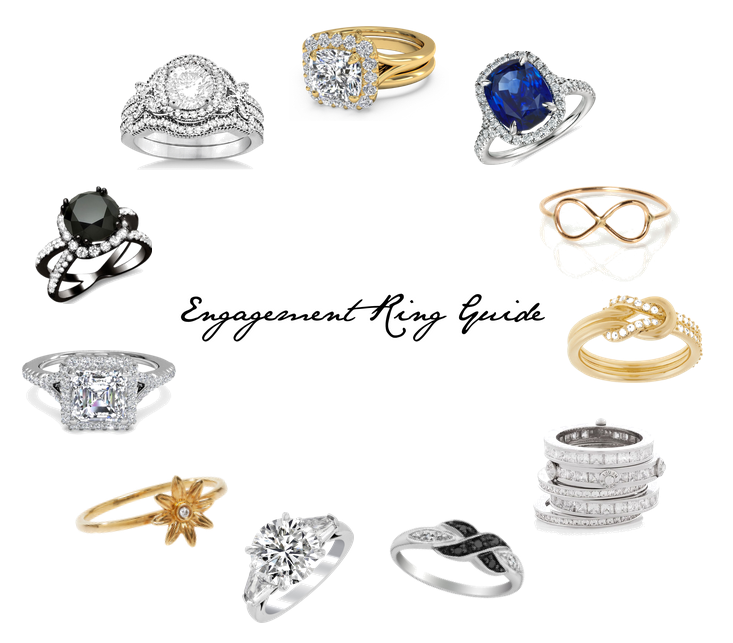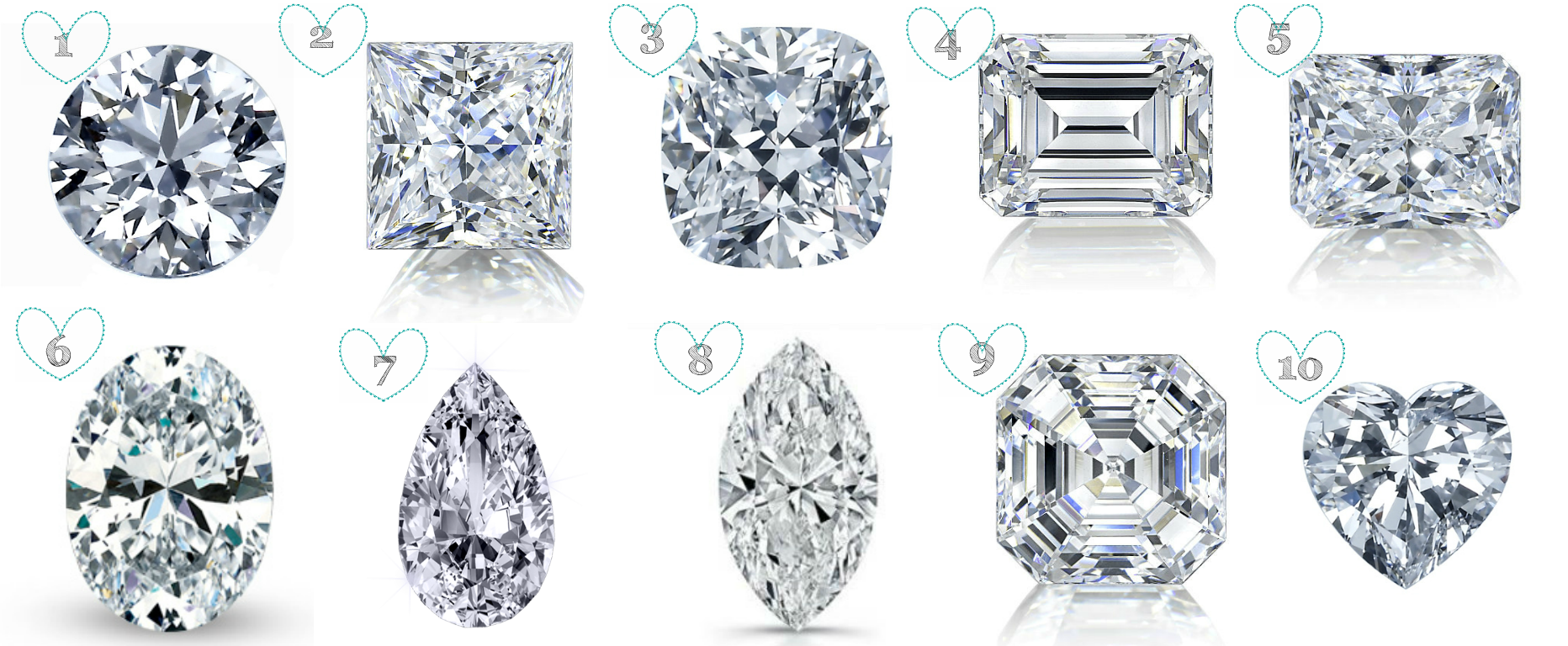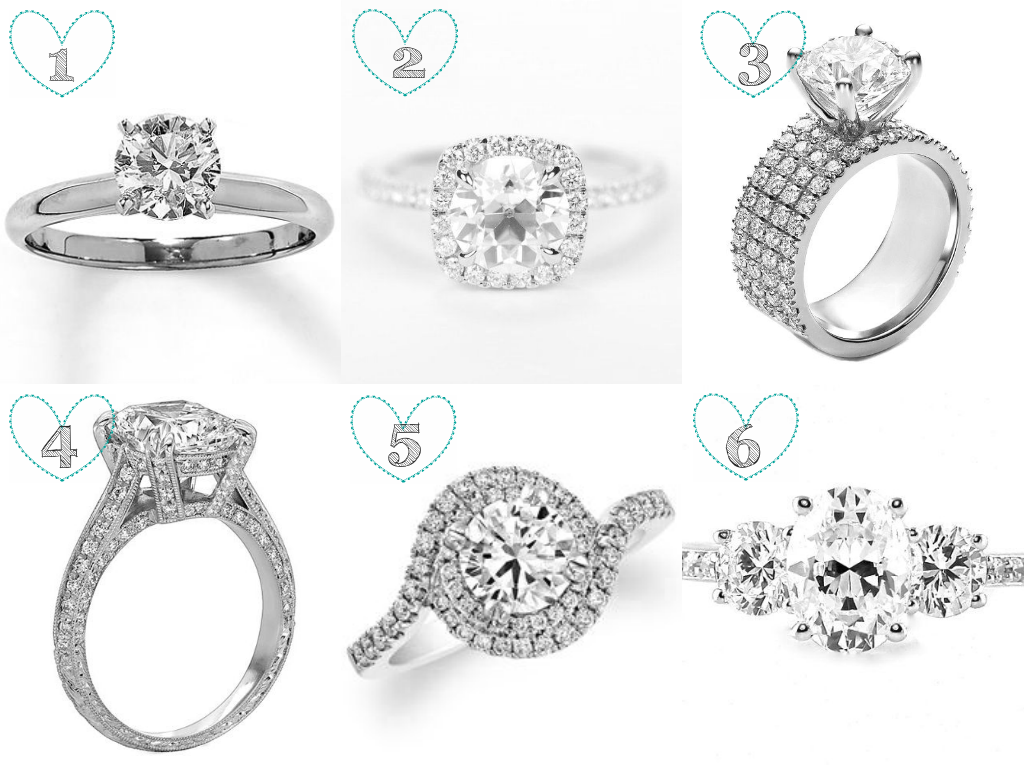
The Engagement Ring Guide Part 2: Styles
Continuing from our earlier post about the history of engagement rings, today we’re going to go over the different styles of engagement rings – in terms of both cut and setting. Within our discussion, we’re going to just be talking about diamond rings. For alternative options, be sure to come back for our next post, where we talk all about recent trends in the rock world.
Conflict Free Diamonds
Another crucial thing that we would like to highlight in terms of diamond-shopping is the issue of conflict diamonds. At Azazie, we wholly and solely support conflict free diamonds, which is so much more important than cut, size, and anything else that should be considered. For those who are not familiar, please read about the Kimberley Process for more information. We suggest that everyone asks their jeweler about the details of each particular diamond. A reputable jeweler should be able to give you its full history. There are also a number of companies that specialize in conflict free diamonds, such as Brilliant Earth. Remember: conflict free does not mean you have to pay more. It simply means that the diamonds were obtained through ethical means. Traceability means the absence of human rights abuses, community empowerment, protecting the environment, and improving the socioeconomic stability of the region. With the proper research, shopping responsibly for your conflict free diamond should also be hassle free.
Cut
1. Round – 51% of brides choose this cut and is by far the most popular
2. Princess – 29%, also brilliant cut diamonds, which means that the facets positioned so that the light coming through them enhance the diamond’s sparkle
3. Cushion – 5%, combines a square cut with rounded corners, much like a pillow
4. Emerald – 4%, its unique look is achieved by step cuts to product a halls-of-mirrors effect
5. Radiant – 3%, the first square cut, a vibrant and lively square diamond
6. Oval – 3%, often features other gemstones
7. Pear – 2%, also called teardrop and may need extra prongs to protect the tip
8. Asscher – 2%, a delicate cut best suited for smaller stones
9. Marquise – 1%, may have a bow-tie effect near the middle if it’s not a good quality cut
10. Heart – >1%, can be round or elongated
Setting
1. Solitaire – The most classic of all engagement rings, solitaires boast one single gemstone. It allows for the light to hit the diamond the most and is an elegant and simple go-to.
2. Halo – With a ‘halo’, or small ring of gems, surrounding the primary gemstone, this style makes the diamond appear bigger and is an intricate and sophisticated setting.
3. Pave – A pave setting is composed of stones that are placed so close together that no metal is shown. It’s for brides who want the most sparkle from their ring.
4. Cathedral – This setting angles up so the focus is just on the gemstone, as it’s protected by the band. Perfect for more cautious brides.
5. Swirl – This unique setting has stones set in a swirling formation around the central diamond. A dreamy and romantic setting.
6. Channel – With small stones embedded alone the side, the channel setting is a modern go-to. It can also be incorporated into ta 3-stone setting, which features three larger diamonds in the center.
(Statistics via XOGroupInc)
Engagement Ring Cost: $5,200
Carat Size: 1 carat for center stone; 1.4 carats total stones
Most Popular Engagement Ring Shapes: Round (53%) and Princess (30%)
Most Popular Engagement Ring Metal: 73% of rings are made of white gold
Time It Takes for Groom to Find Engagement Ring: 3 months
The Luxury Ring Segment: About 12% of couples spend more than $8,000 on the engagement ring
Luxury Engagement Ring Cost: $13,500
Luxury Engagement Ring Carat Size: 1.5 carats for center stone; more than 2 carats total stones
Luxury Wedding Ring Cost: $1,560 for brides; $731 for grooms


